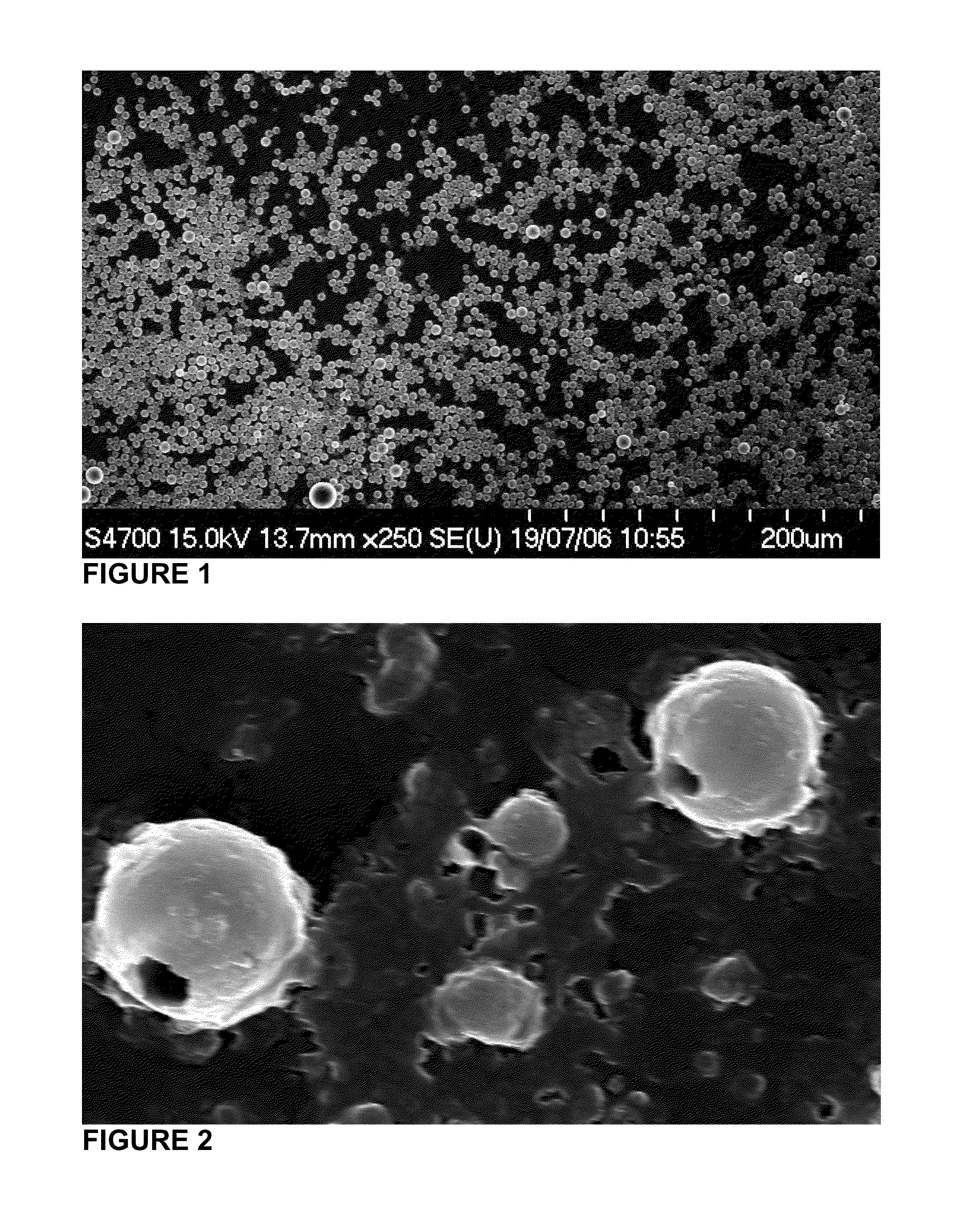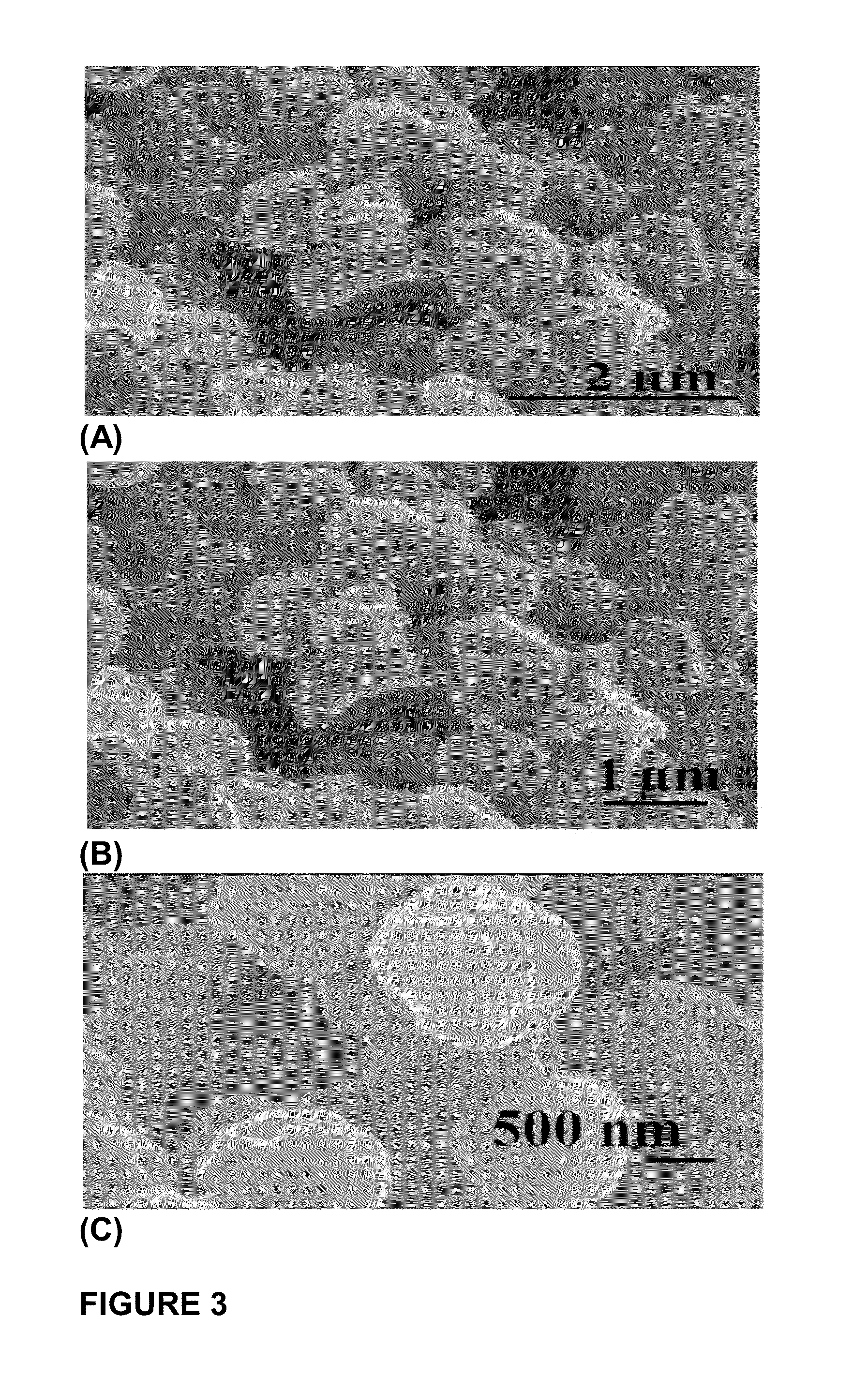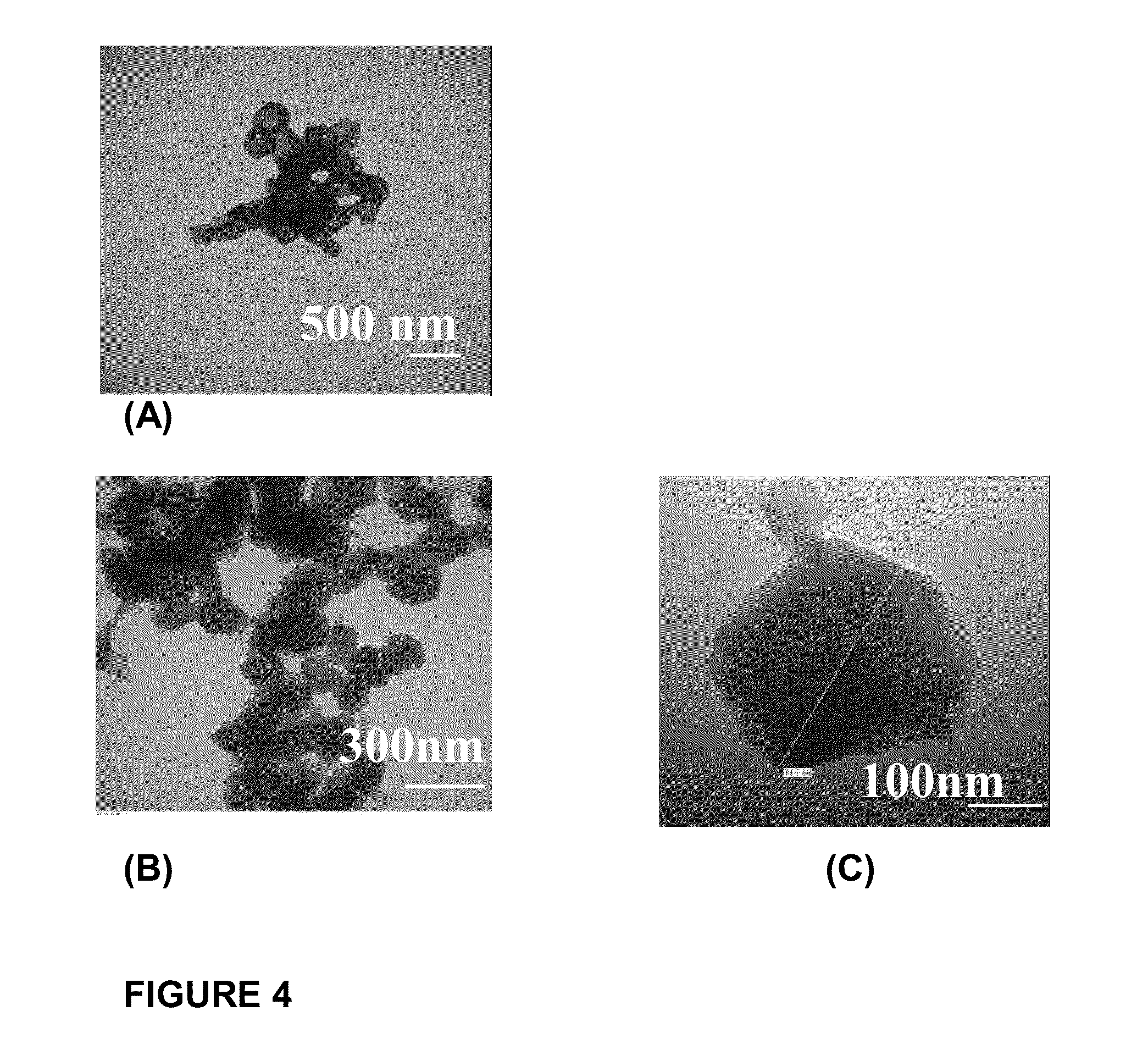Hollow biodegradable nanospheres and nanoshells for delivery of therapeutic and/or imaging molecules
a biodegradable, nano-shell technology, applied in colloidal chemistry, pharmaceutical product form change, transportation and packaging, etc., can solve the problems of lack of efficient, specific and safe nucleic acid delivery systems, no gene therapy, etc., and achieve the effect of functionalizing for specific delivery to a target cell
- Summary
- Abstract
- Description
- Claims
- Application Information
AI Technical Summary
Benefits of technology
Problems solved by technology
Method used
Image
Examples
example
Materials and Methods
[0154]Styrene, poly(vinyl pyrrolidine) (Mw 36,000), absolute ethanol, methanol, azobis-(isobytyrontile) (AIBN), sulfuric acid (H2SO4), acetic acid (AcOH), tetrahydrofuran (THF), chloroform (CHCl3), FITC, DMEM cell media, Hanks PBS, 3T3 fibroblast cell line, bovine serum albumin, penicillin and streptomycin, collagen I, polystyrene beads (Gentaur, PP-025-100), chitosan (low molecular weight, 90% of deacethylation), polyglutamic acid (PGA), plasmid DNA (pDNA), Gaussia Luciferase (GLuc, New England BioLabs) and PicoGreen® (Invitrogen, P11496).
[0155]Chitosan (1 L, 0.5% w / v in 1% AcOH) was purified by precipitation from a solution adjusted to pH 7 using NaOH (sodium hydroxide). The precipitated chitosan was filtered using a strainer, washed with distilled water and freeze-dried overnight. A solution at the desired concentration (0.5% w / v) was prepared in 1% AcOH.
[0156]Polystyrene (PS) beads 100 and 300 nm, phosphate buffered saline (PBS), 2-(N-morpholino)ethanesulfon...
PUM
| Property | Measurement | Unit |
|---|---|---|
| size | aaaaa | aaaaa |
| sizes | aaaaa | aaaaa |
| diameter | aaaaa | aaaaa |
Abstract
Description
Claims
Application Information
 Login to View More
Login to View More - R&D
- Intellectual Property
- Life Sciences
- Materials
- Tech Scout
- Unparalleled Data Quality
- Higher Quality Content
- 60% Fewer Hallucinations
Browse by: Latest US Patents, China's latest patents, Technical Efficacy Thesaurus, Application Domain, Technology Topic, Popular Technical Reports.
© 2025 PatSnap. All rights reserved.Legal|Privacy policy|Modern Slavery Act Transparency Statement|Sitemap|About US| Contact US: help@patsnap.com



